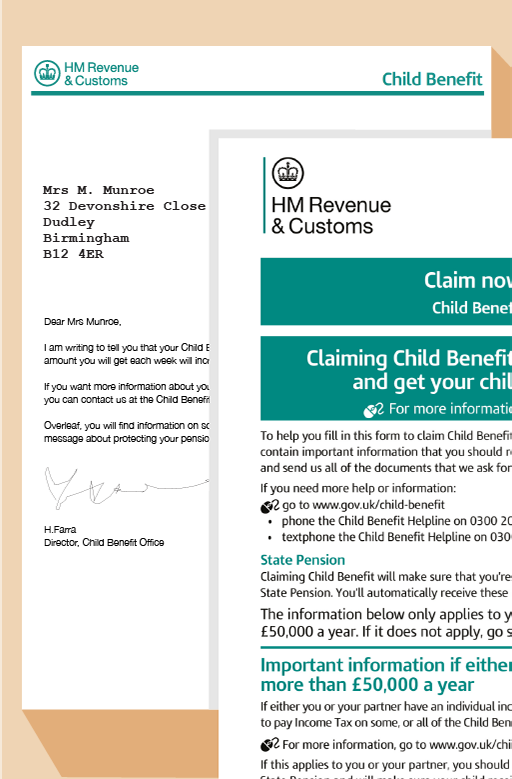2.4 Reading in depth
Reading in depth means reading a text more carefully. This does not mean that you have to read every word out loud or stop every time you come to a word you do not know or even read very slowly. It does mean that you should take enough time and focus to make sure that you truly understand what the text is saying.
Many people feel nervous or worried about reading official letters or filling in long forms.
The best way to deal with these sorts of texts is a three-step method:
- Read sections of the text in a steady way without stopping.
- Go back for a second reading.
- If you are reading something on paper, use your pencil to mark out any words or short sections of the text that you don’t understand. You can go back to these sections and read them again or get someone else to help. You can also use a dictionary to check the meaning of any unfamiliar words. If you are reading something online, you can make a note of any parts you don’t understand.
Activity _unit3.2.7 Activity 17 Three steps
You’ll now practise the three-step method.
Read through the whole passage below at your normal speed, without stopping. Even if you come to difficult words that you don’t understand, just keep going.
Regular Car Maintenance
It is very important to maintain your car properly, especially in the winter months and if you make many long journeys on motorways. Proper car-care and regular servicing are essential elements to protect you and your passengers.
Getting to know your car
Familiarise yourself with your vehicle. Check the handbook to know exactly what the warning and hazard lights signify. Ensure that you know the location of the spare wheel and jacking points. Never jack up a car except at the proper jacking point. It is not safe to prop up a car on bricks or planks of wood; it may fall over, or roll onto you or someone else.
Tyres
Make weekly checks on the tyre pressures and visual examinations for sharp and penetrative objects in the treads of the tyres. Ensure that you replace tyres that do not meet the minimum legal requirements. Failure to do so could result in prosecution, but might also endanger you and other road users. Never drive on tyres that are below the legal limits as you could skid.
Coolant system
Ensure that the coolant system is topped up to the correct level with the correct coolant. Never attempt to add coolant whilst the engine is hot as this may result in scalding accidents.
Oil
Check the oil level at least every month and under your car where you park regularly to make a visual inspection for leakages. Use the dipstick to ensure that the oil is topped up slowly to the correct level – the vehicle handbook will help – and only add extra oil when the car is safely parked on a level surface, and when the engine has been switched off for at least ten minutes. Never leave patches of spilt oil on the ground as these could cause accidents.
Now try the three-step method.
You have already done Step 1 which is to read sections of the text in a steady way without stopping.
So, now try Step 2. Read it through again.
Then Step 3. Note down any words or short sections of the text that you don’t understand. You can look up any words you don’t know in a dictionary later.

